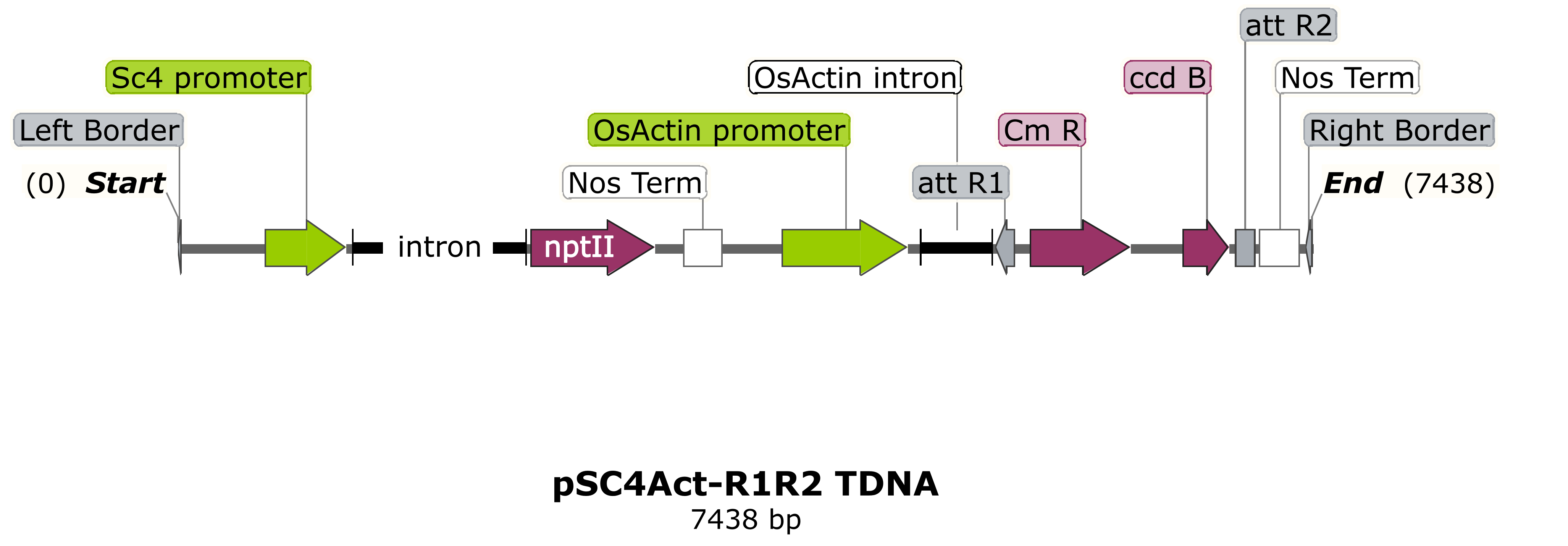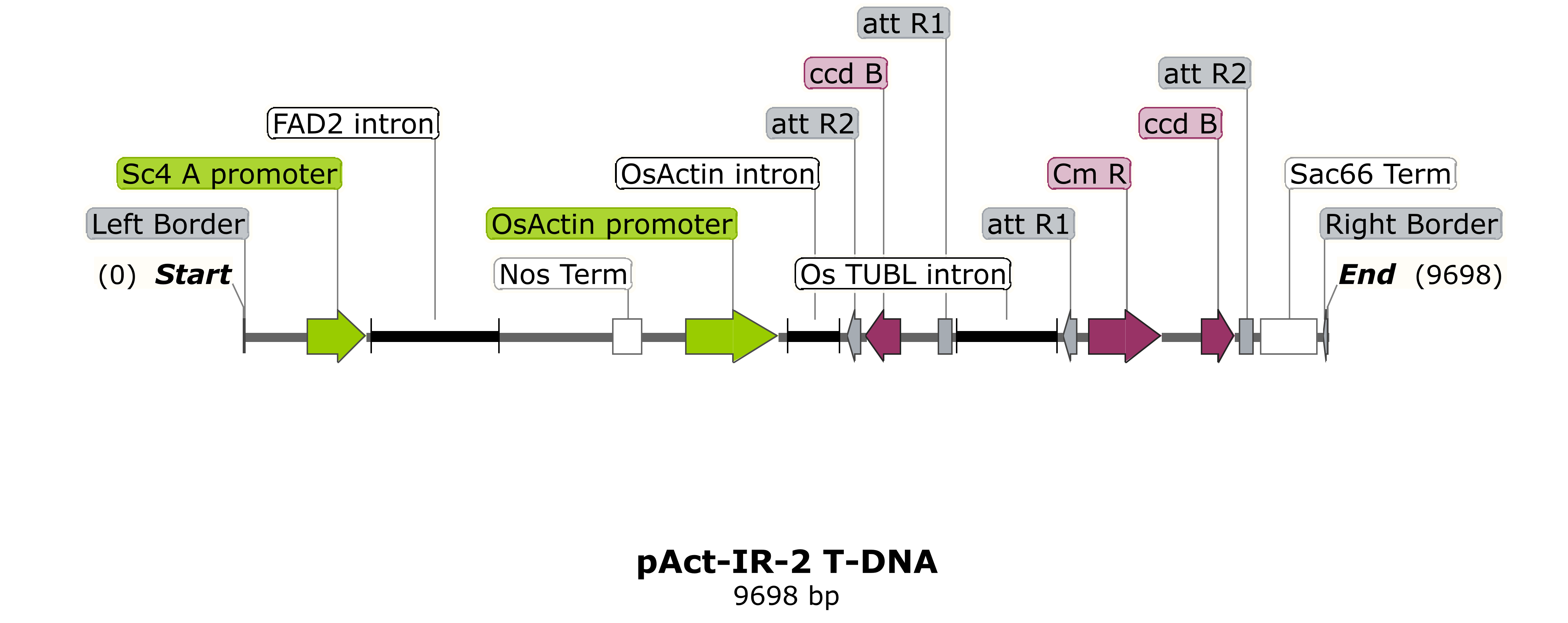APPLICATION FORM
The closing date for the current round of applications is 31st January 2022
The Community Resource for Wheat and Rice Transformation provides capacity for 100 genes to be transformed into wheat and rice free of charge.
NIAB envisages that 75 genes will be transformed into wheat and 25 genes into rice. In the event that wheat or rice transformation is not fully subscribed, additional slots will be made available in the other species. We will encourage researchers working with genes from model crops to test their hypotheses in wheat and rice as appropriate to the gene studied. This will enable new genes to be evaluated more quickly in crops essential to food security worldwide, and allow researchers to amass crucial data which can be used as a basis to seek follow-on funding.
This project also provides funded capacity to characterise 50 regulatory elements in wheat and rice. Promoter and terminator sequences will be included for their expression in a wide range of tissue types, biotic and abiotic stress induced elements will also be included. Researchers can either nominate promoters to be included in this project, or provide constructs which are compatible with our vectors.
Please contact the croptransformation [at] niab.com (NIAB Crop Transformation Group) for further details on this aspect of the project.
This project has been funded for five years by the BBSRC Bioinformatics & Biological Resources fund.
Who can apply?
Academic researchers from UK who are eligible for BBSRC funding are invited to apply for the transformation of their nominated genes. Researchers may apply for several different genes, or for over-expression and silencing by RNAi of the same gene target.
Only 1 gene/construct can be included per application, however a researcher may submit up to two applications per round. Further applications will not be considered by the Advisory Group until outstanding construct(s) from the same researcher, accepted in previous rounds, have been received.
This is a resource for researchers who would like to express a gene in wheat or rice, but do not have the funding to support the transformation. There must be a clear relevance to BBSRC food security targets.
Vectors
NIAB would prefer genes to be supplied in an intermediate pEntr-type construct flanked by attL1/attL2 sequences, ready for transfer into an appropriate NIAB binary vector with a selection cassette via Gateway™ cloning. Some examples of typical destination vector T-DNA regions for cereal transformation are shown below. Advice on construct design can be provided. Confirmation by sequencing that the supplied Entry-type intermediate construct is correct will be required at the construct submission stage.
NIAB typically uses either the maize ubiquitin promoter or the rice actin promoter for constitutive over-expression (pEW472-Ubi-R1R2 or pSc4Act-R1R2).

 Alternatively, researchers may need to introduce their own "promoter-gene of interest-terminator" cassette, for example with the gene of interest expressed from the native sequence or an alternative promoter, (pRLF12R1R2).
Alternatively, researchers may need to introduce their own "promoter-gene of interest-terminator" cassette, for example with the gene of interest expressed from the native sequence or an alternative promoter, (pRLF12R1R2).
 Gateway vectors for RNAi silencing or CRISPR/Cas9 editing of the target gene of interest are also available. Again, RNAi trigger or sgRNA guides should be flanked by attL1/attL2 sequences.
Gateway vectors for RNAi silencing or CRISPR/Cas9 editing of the target gene of interest are also available. Again, RNAi trigger or sgRNA guides should be flanked by attL1/attL2 sequences.

 Other vectors and promoters for traditional cloning approaches or Gateway® cloning may also be available. Goldengate constructs can also be accepted if the gene cassettes are flanked by attL sites.
Other vectors and promoters for traditional cloning approaches or Gateway® cloning may also be available. Goldengate constructs can also be accepted if the gene cassettes are flanked by attL sites.
Please contact the croptransformation [at] niab.com (NIAB Crop Transformation Group) at an early stage to discuss your cloning strategy.
Delivery
Our standard service is to deliver 30 independent transformed T0 wheat plants per construct, as plantlets at 12 weeks from experiment start to the researcher to grow in their own facilities. Non-transformed plants will be provided as control material. In the majority of cases we will use a US soft spring hexaploid wheat, Fielder, for this activity, but if spring or winter wheat germplasm with a specific end-use or disease susceptibility is necessary for your project, please include this information in your application. An adjustment to the number of plants produced with the alternative germplasm may be made.
Rice transformation will use Nipponbare, Kitaake or Donjin germplasm, with 15-20 T0 plants per construct at about eight weeks from experiment start, provided to the researcher to grow in their own facilities.
Post transformation analysis
All plantlets will be analysed by qPCR at the small rooted plantlet stage, to verify that they are transgenic and to provide information on the number of T-DNA copies introduced. Researchers will receive small rooted T0 plants and are very strongly encouraged to undertake RNA /protein expression, metabolic or phenotypic analysis on these T0 plants to prioritise lines for further investigation. The strategy for this analysis must be included in the application, together with confirmation that the researcher has the appropriate facilities to grow the plants to maturity.
The application and review process
There will be an annual call for applications each year, until the programme is completed. If the number of applications exceeds the capacity available, applications will be reviewed by our external Advisory Group. Applications will be ranked on scientific merit/relevance to BBSRC food security, the quality of the proposal and the strategy for analysis.
All applicants will be required to send a brief annual update listing all poster and oral presentations, MSc/PhD theses and papers describing these materials to the CRWRT PI for inclusion in UKRI Research Impact Assessment, and ongoing project review by the Advisory Group.
